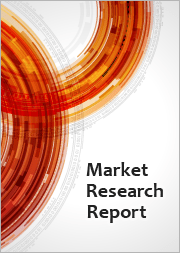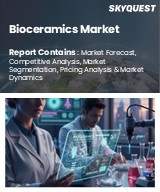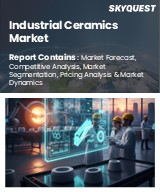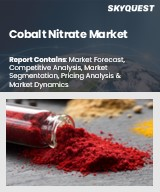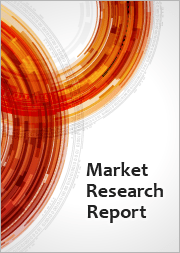
|
시장보고서
상품코드
1718474
테크니컬 세라믹 시장 : 원재료, 제품 유형, 최종사용자별 - 세계 예측(2025-2030년)Technical Ceramics Market by Raw Material, Product Type, End-User - Global Forecast 2025-2030 |
||||||
테크니컬 세라믹 시장의 2023년 시장 규모는 97억 9,000만 달러로 평가되었으며, 2024년에는 104억 달러로 성장하고, CAGR은 6.45%, 2030년에는 151억 8,000만 달러에 달할 것으로 예측됩니다.
| 주요 시장 통계 | |
|---|---|
| 기준 연도 2023년 | 97억 9,000만 달러 |
| 추정 연도 2024년 | 104억 달러 |
| 예측 연도 2030년 | 151억 8,000만 달러 |
| CAGR(%) | 6.45% |
테크니컬 세라믹은 우수한 성능과 내구성을 요구하는 산업을 재구성하며 점점 더 현대 엔지니어링 및 제조 산업의 핵심이 되고 있습니다. 지난 몇 년 동안 이 분야는 극한의 조건을 견딜 수 있는 소재에 대한 탐구를 통해 응용 분야에서 타의 추종을 불허하는 정밀도를 제공하면서 강력한 혁신을 목격해 왔습니다. 원료 과학과 생산 기술의 급속한 발전으로 테크니컬 세라믹은 현재 고온을 견디는 항공우주 부품부터 생체적합성과 신뢰성이 요구되는 생체 의료기기에 이르기까지 다양한 응용 분야에서 매우 중요한 역할을 하고 있습니다.
최근 연구와 시장 평가에 따르면, 세라믹 재료의 진화는 에너지 효율성, 지속가능성 및 비용 효율성 노력과 밀접한 관련이 있습니다. 업계가 복잡한 재료 특성에 대한 의존도가 높아짐에 따라 구조적 무결성, 내열 충격성, 화학적 안정성의 향상과 같은 요인들이 경쟁 상황을 더욱 가속화시키고 있습니다. 이 개괄적인 개요는 테크니컬 세라믹 시장의 현황을 정의하고, 시장 역학 변화, 혁신적인 세분화 전략, 지역적 다양성을 자세히 조사하기 위한 토대를 마련합니다. 이 보고서는 변화의 근본적인 원동력과 이 고성능 분야의 성장을 촉진하고 있는 기술 혁신을 강조합니다.
테크니컬 세라믹 시장의 변화
테크니컬 세라믹 분야는 시장의 경계와 경쟁 역학을 재정의하는 변혁적 변화를 겪고 있습니다. 최근의 혼란은 기술적 혁신, 진화하는 산업 수요, 지속가능성에 대한 세계 지향점 등 여러 가지 복합적인 요인으로 인해 발생했습니다. 연구 개발이 강화됨에 따라 이 분야는 현재 첨단 가공 기술, 디지털 제조, 혁신적인 설계 방법을 통합하여 새로운 성능 벤치마크를 이끌어 내고 있습니다.
이 변혁기는 기존의 광범위한 재료에서 틈새 애플리케이션을 위한 고도로 전문화된 세라믹 구성으로 전환하는 것이 특징입니다. 제조 공정에 자동화가 도입되고, 재료 합성의 정확도가 높아지면서 생산 주기가 단축되고, 품질 관리가 강화되었습니다. 더 중요한 것은 새로운 원료와 하이브리드 세라믹 제품을 통해 제조업체가 엄격한 업계 표준을 충족하고 에너지 사용을 최적화하며 재료 낭비를 줄일 수 있다는 점입니다. 기업과 최종사용자 모두 환경적 책임과 연계된 성능 향상을 추구하고 있기 때문에 이러한 진화는 시장 확대와 기술 혁신의 발판을 마련하고 있습니다.
주요 부문에 대한 인사이트
시장 세분화를 깊이 파고들면 기술 세라믹 산업을 이해하기 위한 구조적 접근 방식이 드러납니다. 원료 기준으로 볼 때, 분석은 비산화물 세라믹과 산화물 세라믹을 구분합니다. 비산화물 세라믹은 질화알루미나, 탄화규소, 질화규소 등의 하위 유형으로 나뉘며, 각 유형은 고유한 특성과 용도를 제공합니다. 보완적으로, 산화물 세라믹은 알루미나 세라믹, 티탄산 세라믹, 지르코니아 세라믹을 통해 다양한 열적 및 기계적 특성을 반영하는 산화물 세라믹으로 세분화됩니다.
제품 유형에 따른 세분화는 세라믹 코팅, 세라믹 매트릭스 복합재, 모놀리식 세라믹의 세 가지 중요한 그룹을 식별합니다. 각 제품 유형은 보호 표면층부터 고응력 애플리케이션을 위해 설계된 재료에 이르기까지 뚜렷한 성능 특성을 강조합니다. 마지막으로, 최종사용자 세분화는 항공우주, 자동차, 전자, 에너지, 의료 등의 분야를 포괄하여 업계의 방향성을 조명합니다. 이 프레임워크에서 전자 분야는 전기 절연체, 수동 부품, 압전 세라믹의 스펙트럼을 통해 추가적으로 조사되며, 에너지 시장은 비재생에너지와 재생에너지의 응용을 구분합니다. 마찬가지로, 의료 분야는 의료용 임플란트와 수술기구로 분류되어 이 분야의 정밀도와 신뢰성에 대한 노력을 강조하고 있습니다. 이러한 종합적인 세분화는 보다 타겟팅된 시장 전략과 제품 개발 이니셔티브를 촉진하는 통합적인 관점을 제공합니다.
목차
제1장 서문
제2장 조사 방법
제3장 주요 요약
제4장 시장 개요
제5장 시장 인사이트
- 시장 역학
- 성장 촉진요인
- 성장 억제요인
- 기회
- 해결해야 할 과제
- 시장 세분화 분석
- Porter’s Five Forces 분석
- PESTLE 분석
- 정치
- 경제
- 사회
- 기술
- 법률
- 환경
제6장 테크니컬 세라믹 시장 : 원재료별
- 비산화물 세라믹
- 질화 알루미나
- 탄화규소
- 질화 실리콘
- 산화물 세라믹
- 알루미나 세라믹
- 티탄산염 세라믹
- 지르코니아 세라믹
제7장 테크니컬 세라믹 시장 : 제품 유형별
- 세라믹 코팅
- 세라믹 매트릭스 복합재료
- 모놀리식 세라믹
제8장 테크니컬 세라믹 시장 : 최종사용자별
- 항공우주
- 자동차
- 일렉트로닉스
- 전기 절연체
- 수동 부품
- 압전 세라믹
- 에너지
- 재생 불가능한 에너지
- 재생에너지
- 의학
- 의료 임플란트
- 수술기구
제9장 아메리카의 테크니컬 세라믹 시장
- 아르헨티나
- 브라질
- 캐나다
- 멕시코
- 미국
제10장 아시아태평양의 테크니컬 세라믹 시장
- 호주
- 중국
- 인도
- 인도네시아
- 일본
- 말레이시아
- 필리핀
- 싱가포르
- 한국
- 대만
- 태국
- 베트남
제11장 유럽, 중동 및 아프리카의 테크니컬 세라믹 시장
- 덴마크
- 이집트
- 핀란드
- 프랑스
- 독일
- 이스라엘
- 이탈리아
- 네덜란드
- 나이지리아
- 노르웨이
- 폴란드
- 카타르
- 러시아
- 사우디아라비아
- 남아프리카공화국
- 스페인
- 스웨덴
- 스위스
- 튀르키예
- 아랍에미리트
- 영국
제12장 경쟁 구도
- 시장 점유율 분석, 2023
- FPNV 포지셔닝 매트릭스, 2023
- 경쟁 시나리오 분석
- 전략 분석과 제안
기업 리스트
- 3M Company
- Advanced Ceramic Technology
- Advanced Ceramics Corp.
- Advanced Ceramics Manufacturing
- AGC Inc.
- ANTS Ceramics Pvt Ltd.
- Blasch Precision Ceramics, Inc.
- Ceramitec Industries
- CeramTec GmbH
- COI Ceramics, Inc.
- Compagnie de Saint-Gobain S.A.
- CoorsTek Inc.
- Corning Incorporated
- Elan Technology
- Ferrotec Holdings Corporation
- Imerys S.A.
- Kyocera Corporation
- MARUWA Co., Ltd.
- Materion Corporation
- McDanel Advanced Ceramic Technologies LLC
- Morgan Advanced Materials PLC
- Murata Manufacturing Co., Ltd.
- NGK Insulators, Ltd.
- OC Oerlikon Management AG
- Ortech, Inc.
- Paul Rauschert GmbH & Co. KG
- SCHOTT AG
- SINTX Technologies, Inc.
- STC Material Solutions by IDEX Corporation
- Wonik QnC Corporation
The Technical Ceramics Market was valued at USD 9.79 billion in 2023 and is projected to grow to USD 10.40 billion in 2024, with a CAGR of 6.45%, reaching USD 15.18 billion by 2030.
| KEY MARKET STATISTICS | |
|---|---|
| Base Year [2023] | USD 9.79 billion |
| Estimated Year [2024] | USD 10.40 billion |
| Forecast Year [2030] | USD 15.18 billion |
| CAGR (%) | 6.45% |
Technical ceramics have increasingly become a cornerstone of modern engineering and manufacturing, reshaping industries that demand superior performance and durability. Over the past several years, this sector has witnessed robust innovation driven by the quest for materials that can endure extreme conditions while offering unmatched precision in application. With rapid advancements in raw material science and production techniques, technical ceramics are now pivotal in a wide range of applications - from aerospace components that endure high temperatures to biomedical devices that require biocompatibility and reliability.
In recent research and market assessments, the evolution of ceramic materials has been clearly linked to efforts in energy efficiency, sustainability, and cost-effectiveness. As industries expand their reliance on intricate material properties, factors such as improved structural integrity, thermal shock resistance, and chemical stability continue to fuel a competitive landscape. This introductory overview sets the stage for a detailed exploration of the shifting market dynamics, innovative segmentation strategies, and regional diversity that define the current state of the technical ceramics market. Here, we highlight the underlying drivers of change and the technological breakthroughs that are catalyzing growth in this high-performance sector.
Transformative Shifts in the Technical Ceramics Landscape
The technical ceramics landscape is undergoing transformative shifts that are redefining market boundaries and competitive dynamics. Recent disruptions have emerged from several converging factors, including technological breakthroughs, evolving industry demands, and a global pivot towards sustainability. With research and development efforts intensifying, the sector now integrates advanced processing technologies, digital manufacturing, and innovative design methodologies, thereby unlocking new performance benchmarks.
This period of transformation is characterized by a marked transition from conventional, broad-spectrum materials to highly specialized ceramic compositions that cater to niche applications. The infusion of automation in manufacturing processes and the increased precision in material synthesis have resulted in shorter production cycles and heightened quality control. More importantly, new raw materials and hybrid ceramic products are now enabling manufacturers to meet stringent industry standards, optimize energy usage, and reduce material waste. As companies and end-users alike seek enhanced performance combined with environmental responsibility, this evolution is setting the stage for further market expansion and technological innovation.
Key Segmentation Insights
A deep-dive into market segmentation unveils a structured approach to understanding the technical ceramics industry. When considered on the basis of raw material, the analysis differentiates between Non-Oxide Ceramics and Oxide Ceramics. The Non-Oxide category further dissects into subtypes such as Alumina Nitride, Silicon Carbide, and Silicon Nitride, each offering unique properties and applications. Complementarily, Oxide Ceramics are scrutinized through Alumina Ceramics, Titanate Ceramics, and Zirconia Ceramics, reflecting a range of thermal and mechanical characteristics.
Expanding the lens, segmentation based on product type identifies three pivotal groups: Ceramic Coatings, Ceramic Matrix Composites, and Monolithic Ceramics. Each product type emphasizes distinct performance traits-from protective surface layers to materials designed for high-stress applications. Finally, end-user segmentation sheds light on industry directions, encompassing sectors like Aerospace, Automotive, Electronics, Energy, and Medical. Within this framework, the electronics segment is further explored through the spectrum of Electrical Insulators, Passive Components, and Piezoelectric Ceramics, while the energy market differentiates between Non-renewable and Renewable Energy applications. Similarly, the medical field is dissected into Medical Implants and Surgical Instruments, underscoring the sector's commitment to precision and reliability. This comprehensive segmentation offers an integrated perspective that facilitates more targeted market strategies and product development initiatives.
Based on Raw Material, market is studied across Non-Oxide Ceramics and Oxide Ceramics. The Non-Oxide Ceramics is further studied across Alumina Nitride, Silicon Carbide, and Silicon Nitride. The Oxide Ceramics is further studied across Alumina Ceramics, Titanate Ceramics, and Zirconia Ceramics.
Based on Product Type, market is studied across Ceramic Coatings, Ceramic Matrix Composites, and Monolithic Ceramics.
Based on End-User, market is studied across Aerospace, Automotive, Electronics, Energy, and Medical. The Electronics is further studied across Electrical Insulators, Passive Components, and Piezoelectric Ceramics. The Energy is further studied across Non-renewable Energy and Renewable Energy. The Medical is further studied across Medical Implants and Surgical Instruments.
Key Regional Insights
Regional analysis in the technical ceramics market reveals distinct trends and growth opportunities across diverse geographical areas. Insights from the Americas highlight a mature market with well-established technological ecosystems and a strong base for research and development. In parallel, the Europe, Middle East & Africa region exhibits a dynamic mix of regulatory evolutions, strong innovation clusters, and strategic partnerships that support market expansion. Meanwhile, the Asia-Pacific arena stands out for its rapid industrial growth, substantial investment in infrastructure, and a burgeoning output in cutting-edge ceramic technologies. Together, these regional insights not only underscore the heterogeneous nature of the market but also emphasize the influence of localized economic and technological trends on global competitive landscapes.
Based on Region, market is studied across Americas, Asia-Pacific, and Europe, Middle East & Africa. The Americas is further studied across Argentina, Brazil, Canada, Mexico, and United States. The United States is further studied across California, Florida, Illinois, New York, Ohio, Pennsylvania, and Texas. The Asia-Pacific is further studied across Australia, China, India, Indonesia, Japan, Malaysia, Philippines, Singapore, South Korea, Taiwan, Thailand, and Vietnam. The Europe, Middle East & Africa is further studied across Denmark, Egypt, Finland, France, Germany, Israel, Italy, Netherlands, Nigeria, Norway, Poland, Qatar, Russia, Saudi Arabia, South Africa, Spain, Sweden, Switzerland, Turkey, United Arab Emirates, and United Kingdom.
Key Companies Insights
An analysis of the competitive landscape within the technical ceramics domain reveals a spectrum of prominent players driving innovation and market penetration. The industry sees the dynamic presence of well-established names such as 3M Company, Advanced Ceramic Technology, Advanced Ceramics Corp., and Advanced Ceramics Manufacturing, which are known for their deep-seated expertise and innovative product lines. Other industry heavyweights like AGC Inc., ANTS Ceramics Pvt Ltd., Blasch Precision Ceramics, Inc., and Ceramitec Industries, continue to invest in pioneering research to enhance material performance and application versatility. Companies such as CeramTec GmbH, COI Ceramics, Inc., and Compagnie de Saint-Gobain S.A. lead the market with sophisticated solutions, while organizations like CoorsTek Inc. and Corning Incorporated push the envelope in material science further.
Moreover, players such as Elan Technology, Ferrotec Holdings Corporation, Imerys S.A., Kyocera Corporation, and MARUWA Co., Ltd. have carved out significant market shares by addressing niche demands and refining production processes. Other influential entities including Materion Corporation, McDanel Advanced Ceramic Technologies LLC, Morgan Advanced Materials PLC, Murata Manufacturing Co., Ltd., NGK Insulators, Ltd., OC Oerlikon Management AG, Ortech, Inc., Paul Rauschert GmbH & Co. KG, SCHOTT AG, SINTX Technologies, Inc., STC Material Solutions by IDEX Corporation, and Wonik QnC Corporation illustrate a vibrant mix of innovation, specialization, and strategic market positioning. Their combined efforts underscore the industrial commitment to quality, operational excellence, and forward-thinking product development practices that continue to propel the technical ceramics market.
The report delves into recent significant developments in the Technical Ceramics Market, highlighting leading vendors and their innovative profiles. These include 3M Company, Advanced Ceramic Technology, Advanced Ceramics Corp., Advanced Ceramics Manufacturing, AGC Inc., ANTS Ceramics Pvt Ltd., Blasch Precision Ceramics, Inc., Ceramitec Industries, CeramTec GmbH, COI Ceramics, Inc., Compagnie de Saint-Gobain S.A., CoorsTek Inc., Corning Incorporated, Elan Technology, Ferrotec Holdings Corporation, Imerys S.A., Kyocera Corporation, MARUWA Co., Ltd., Materion Corporation, McDanel Advanced Ceramic Technologies LLC, Morgan Advanced Materials PLC, Murata Manufacturing Co., Ltd., NGK Insulators, Ltd., OC Oerlikon Management AG, Ortech, Inc., Paul Rauschert GmbH & Co. KG, SCHOTT AG, SINTX Technologies, Inc., STC Material Solutions by IDEX Corporation, and Wonik QnC Corporation. Actionable Recommendations for Industry Leaders
As the technical ceramics market continues to evolve, industry leaders are encouraged to adopt strategies that not only enhance operational efficiency but also drive innovation and market competitiveness. It is essential to invest in and adopt state-of-the-art processing technologies that reduce production costs while delivering products that meet increasingly stringent performance criteria. Collaborations with research institutions and participation in technology consortia can further accelerate product development and yield breakthrough innovations.
Leaders should also focus on building robust supply chains that prioritize sustainability and resilience, ensuring the uninterrupted availability of high-quality raw materials and components. Integrating market intelligence data into strategic planning can provide valuable insight into emerging trends and untapped regional opportunities. Adopting tailored, customer-centric strategies that reflect the nuanced demands of diverse end-user industries-ranging from aerospace to medical-will decisively position organizations to capture incremental market share. In an era where rapid adaptation is crucial, aligning product innovation with evolving regulatory standards and environmental considerations remains a top priority.
Conclusion: Summing Up the Strategic Outlook
In conclusion, the technical ceramics market stands at a pivotal juncture marked by transformative technological advancements and dynamic shifts in both regional and product-specific landscapes. The in-depth examination of segmentation highlights the importance of understanding the intrinsic properties of both non-oxide and oxide ceramics, while insights from the product and end-user segments emphasize the critical need for customization and performance enhancement. A comprehensive regional analysis further supports the notion that tailored strategies are vital to navigate differing economic and technological paradigms across the Americas, Europe, Middle East & Africa, and Asia-Pacific.
Overall, the convergence of innovative research, robust market segmentation, and strategic corporate initiatives is setting the stage for a future defined by quality, efficiency, and sustainability. As stakeholders across various industries continue to invest in and adopt advanced ceramic solutions, the market is poised for accelerated growth and long-term success.
Table of Contents
1. Preface
- 1.1. Objectives of the Study
- 1.2. Market Segmentation & Coverage
- 1.3. Years Considered for the Study
- 1.4. Currency & Pricing
- 1.5. Language
- 1.6. Stakeholders
2. Research Methodology
- 2.1. Define: Research Objective
- 2.2. Determine: Research Design
- 2.3. Prepare: Research Instrument
- 2.4. Collect: Data Source
- 2.5. Analyze: Data Interpretation
- 2.6. Formulate: Data Verification
- 2.7. Publish: Research Report
- 2.8. Repeat: Report Update
3. Executive Summary
4. Market Overview
5. Market Insights
- 5.1. Market Dynamics
- 5.1.1. Drivers
- 5.1.1.1. Growing demand for high-performance materials in the electronics and semiconductor industries
- 5.1.1.2. Increasing adoption of technical ceramics in aerospace and defense applications
- 5.1.2. Restraints
- 5.1.2.1. High production costs and complex manufacturing processes associated with technical ceramics
- 5.1.3. Opportunities
- 5.1.3.1. Technological advancements in digital technologies and 3D printing techniques
- 5.1.3.2. Emerging utilization of technical ceramics in medical devices and dental implants
- 5.1.4. Challenges
- 5.1.4.1. Supply chain constraints and performance limitations regarding technical ceramics
- 5.1.1. Drivers
- 5.2. Market Segmentation Analysis
Raw Material: Aluminum Nitride is a critical material for efficient thermal management in electronics
- 5.2.2. Product Type: Ceramic matrix composites enhance strength and toughness in high-stress applications
- 5.2.3. End-User: Energy sector relies on ceramics for applications in both non-renewable and renewable energy
- 5.3. Porter's Five Forces Analysis
- 5.3.1. Threat of New Entrants
- 5.3.2. Threat of Substitutes
- 5.3.3. Bargaining Power of Customers
- 5.3.4. Bargaining Power of Suppliers
- 5.3.5. Industry Rivalry
- 5.4. PESTLE Analysis
- 5.4.1. Political
- 5.4.2. Economic
- 5.4.3. Social
- 5.4.4. Technological
- 5.4.5. Legal
- 5.4.6. Environmental
6. Technical Ceramics Market, by Raw Material
- 6.1. Introduction
- 6.2. Non-Oxide Ceramics
- 6.2.1. Alumina Nitride
- 6.2.2. Silicon Carbide
- 6.2.3. Silicon Nitride
- 6.3. Oxide Ceramics
- 6.3.1. Alumina Ceramics
- 6.3.2. Titanate Ceramics
- 6.3.3. Zirconia Ceramics
7. Technical Ceramics Market, by Product Type
- 7.1. Introduction
- 7.2. Ceramic Coatings
- 7.3. Ceramic Matrix Composites
- 7.4. Monolithic Ceramics
8. Technical Ceramics Market, by End-User
- 8.1. Introduction
- 8.2. Aerospace
- 8.3. Automotive
- 8.4. Electronics
- 8.4.1. Electrical Insulators
- 8.4.2. Passive Components
- 8.4.3. Piezoelectric Ceramics
- 8.5. Energy
- 8.5.1. Non-renewable Energy
- 8.5.2. Renewable Energy
- 8.6. Medical
- 8.6.1. Medical Implants
- 8.6.2. Surgical Instruments
9. Americas Technical Ceramics Market
- 9.1. Introduction
- 9.2. Argentina
- 9.3. Brazil
- 9.4. Canada
- 9.5. Mexico
- 9.6. United States
10. Asia-Pacific Technical Ceramics Market
- 10.1. Introduction
- 10.2. Australia
- 10.3. China
- 10.4. India
- 10.5. Indonesia
- 10.6. Japan
- 10.7. Malaysia
- 10.8. Philippines
- 10.9. Singapore
- 10.10. South Korea
- 10.11. Taiwan
- 10.12. Thailand
- 10.13. Vietnam
11. Europe, Middle East & Africa Technical Ceramics Market
- 11.1. Introduction
- 11.2. Denmark
- 11.3. Egypt
- 11.4. Finland
- 11.5. France
- 11.6. Germany
- 11.7. Israel
- 11.8. Italy
- 11.9. Netherlands
- 11.10. Nigeria
- 11.11. Norway
- 11.12. Poland
- 11.13. Qatar
- 11.14. Russia
- 11.15. Saudi Arabia
- 11.16. South Africa
- 11.17. Spain
- 11.18. Sweden
- 11.19. Switzerland
- 11.20. Turkey
- 11.21. United Arab Emirates
- 11.22. United Kingdom
12. Competitive Landscape
- 12.1. Market Share Analysis, 2023
- 12.2. FPNV Positioning Matrix, 2023
- 12.3. Competitive Scenario Analysis
- 12.3.1. Lucideon and Technetics Group join forces to advance NASA-endorsed ceramic composites for aerospace
- 12.3.2. CoorsTek increases South Korea's semiconductor landscape with advanced technical ceramics expansion
- 12.3.3. Lucideon's GBP 5.6 million investment in advanced ceramics equipment
- 12.3.4. Sinaptic Technologies secures Colorado grant to revolutionize ceramic additive manufacturing
- 12.3.5. Strategic acquisition of international ceramics engineering by private group
- 12.3.6. SINTX and Prodways collaborate to revolutionize ceramic 3D printing
- 12.3.7. Watlow has opened a Ceramic Technology Center to develop advanced material solutions
- 12.3.8. Kyocera Fineceramics Europe's strategic EUR 34 million investment enables eco-friendly production in Germany
- 12.3.9. IDEX Corporation's acquisition of STC Material Solutions enables technical ceramics capabilities
- 12.3.10. Nurol Teknoloji strengthens global position in technical ceramics with IKH majority stake purchase
- 12.3.11. MO-SCI announced its acquisition of assets from 3M's Advanced Materials business
- 12.4. Strategy Analysis & Recommendation
- 12.4.1. CeramTec GmbH
- 12.4.2. CoorsTek Inc.
- 12.4.3. Materion Corporation
- 12.4.4. Corning Incorporated
Companies Mentioned
- 1. 3M Company
- 2. Advanced Ceramic Technology
- 3. Advanced Ceramics Corp.
- 4. Advanced Ceramics Manufacturing
- 5. AGC Inc.
- 6. ANTS Ceramics Pvt Ltd.
- 7. Blasch Precision Ceramics, Inc.
- 8. Ceramitec Industries
- 9. CeramTec GmbH
- 10. COI Ceramics, Inc.
- 11. Compagnie de Saint-Gobain S.A.
- 12. CoorsTek Inc.
- 13. Corning Incorporated
- 14. Elan Technology
- 15. Ferrotec Holdings Corporation
- 16. Imerys S.A.
- 17. Kyocera Corporation
- 18. MARUWA Co., Ltd.
- 19. Materion Corporation
- 20. McDanel Advanced Ceramic Technologies LLC
- 21. Morgan Advanced Materials PLC
- 22. Murata Manufacturing Co., Ltd.
- 23. NGK Insulators, Ltd.
- 24. OC Oerlikon Management AG
- 25. Ortech, Inc.
- 26. Paul Rauschert GmbH & Co. KG
- 27. SCHOTT AG
- 28. SINTX Technologies, Inc.
- 29. STC Material Solutions by IDEX Corporation
- 30. Wonik QnC Corporation






